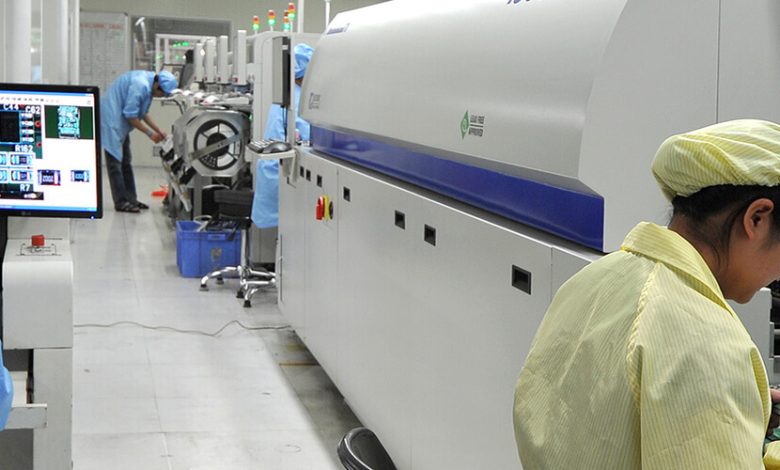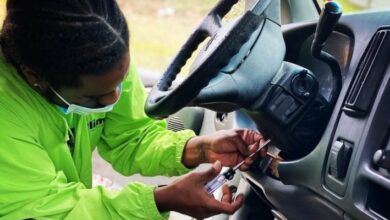Knowledge of common PCB components

Abstract: PCB parts include: resistors, capacitors, potentiometers, electromechanical , connectors, semiconductor discrete devices, electroacoustic devices, laser devices, electronic display devices, optoelectronic devices, printed circuit boards, integrated circuits, etc. Turnkey PCB assembly companies will definitely use these electronic parts when assembling products for their customers. FS Technology is a company with PCB component procurement capabilities. Let us introduce these electronic components to you.
Electronic components refer to electronic components and components of electric small machines and instruments. They usually consist of several parts and can be used in similar products; often referring to certain industries such as electrical appliances, radios, instrumentation, etc. Parts, such as capacitors, transistors, hairsprings, springs and other sub-devices. The common ones are diodes.

As a turnkey PCB assembly company, FS Technology is the best in China in controlling the quality of components. The original PCB we use has EU CE certification, US UL certification, German VDE and TUV certification, CQC certification and other international certifications China ensures that parts are qualified.
Classification of electronic components
Components are products that do not change the molecular composition of raw materials during factory processing.
energy device. It includes: resistance, capacitance, inductance. (aka passive components)
Components are divided into:
1. Circuit components: diodes, resistors, etc.
2. Connecting components: connectors, sockets, connecting cables, printed circuit boards (PCBs)
Devices refer to products that change the molecular structure of raw materials during production and processing.
Kind of equipment:
1. Active device, its main features are: (1) its own power consumption (2) need an external power supply.
2. Discrete devices, divided into (1) Bipolar Transistor Tube (2) Field Effect Transistor (3) SCR (4) Semiconductor Resistor Capacitor

Resistor
We use “R” plus a number to denote resistance. (Example: R1 represents a resistor whose number is 1.) The main functions of resistors in the circuit are: shunt, current limit, voltage divider, bias, etc.
Capacitance
We use “C” followed by a number to represent capacitors (eg, C13 for capacitor number 13). A capacitor is an element consisting of two metal films placed close to each other and insulated with insulating material. Separated. The characteristics of capacitors are mainly DC and AC.
The capacity of a capacitor represents the amount of electrical energy that can be stored. FS Technology calls the blocking effect of capacitors on AC signals as capacitive reactance, which is related to the frequency and capacitance of AC signals. In a one-stop PCB manufacturing job, we need to perform functional testing on the assembled PCB, commonly known as pcb assembly inspection, this job can assure you that your product can function properly.
Crystal diode
The commonly used “D” in Crystal diode circuits adds a number, such as: D5 represents the diode numbered 5.
Function: Main features The diode is unidirectionally conductive, that is, under the action of forward voltage, the on-resistance is very small; under the action of reverse voltage, the on-resistance is extremely large or infinite.
Because the diode has the above characteristics, it is often used in rectification, isolation, voltage regulation, polarity protection, coding. In circuits such as control, FM modulation and squelch.
Inductor
Although FS Technology rarely uses inductors in the production of electronic products, inductors are equally important in circuits We think that inductors, like capacitors, are also energy storage elements that convert electrical energy into magnetic field energy and store energy in the magnetic field. The symbol L means inductance, its basic unit is Henry (H), and the unit commonly used by FS technology is millihenry (mH). Often combined with capacitors to form LC filters, LC oscillators, etc. In addition, people also use the characteristics of inductance to make choke coils, transformers, relays, etc.
Combinational Circuit
FS Technology integrates transistors, resistors, capacitors and other components on a silicon substrate with a special process to form an integrated circuit. The English abbreviation is IC. Also called a chip.
Analog integrated circuits refer to integrated circuits that integrate components such as capacitors, resistors, and transistors to perform signal analog processing. FS Technology divides integrated circuits into the following categories, including integrated operational amplifiers, comparators, logarithmic and exponential amplifiers, analog multipliers (dividers), phase-locked loops, power management chips, and more. The main components of the analog integrated circuit are: amplifier, filter, feedback circuit, reference source circuit, switched capacitor circuit, etc. Experienced designers obtain analog integrated circuits by manually debugging circuits. We can use EDA software to control the description language of the corresponding digital integrated circuits.

A digital integrated circuit is a digital logic circuit or system made by integrating components and connections on the same semiconductor chip. The number of gates determines the size of the integrated circuit. According to the size, it can be divided into small scale integrated circuit (SSI) circuit, medium scale integrated circuit (MSI) circuit, large scale integrated circuit (LSI) circuit and very large scale integrated circuit (VLSI) circuit. Circuits and Very Large Scale Integration (ULSI) circuits.
Small integrated circuits contain no more than 10 gate circuits, and the number of components does not exceed 100; medium-sized integrated circuits contain no more than 10-100 gate circuits, and the number of components does not exceed 1,000; large-scale integrated circuits contain more than 100 gate circuits , the number of components exceeds 1,000; VLSI contains more than 10,000 gate circuits and the number of components is 10.It includes: basic logic gates, flip-flops, registers, decoders, drivers, counters, shaping circuits, programmable logic devices, microprocessors, microcontrollers, DSPs, etc.
If you still don’t know much about combinational circuits, FS Technology will give a detailed introduction to this chapter in the PCBA blog




